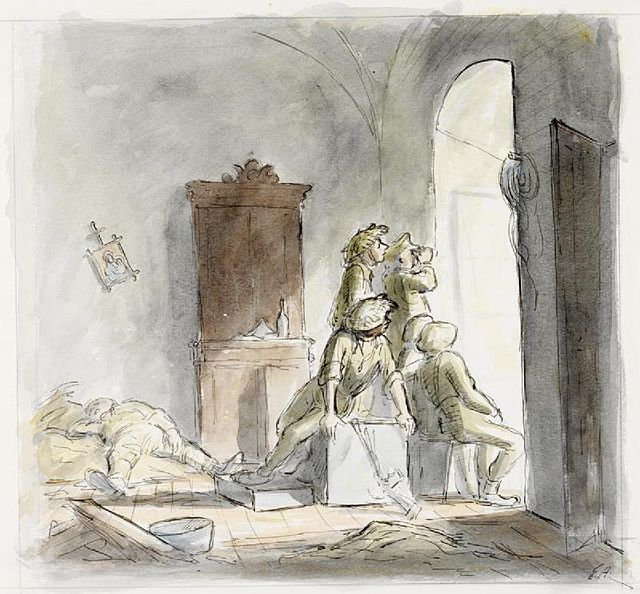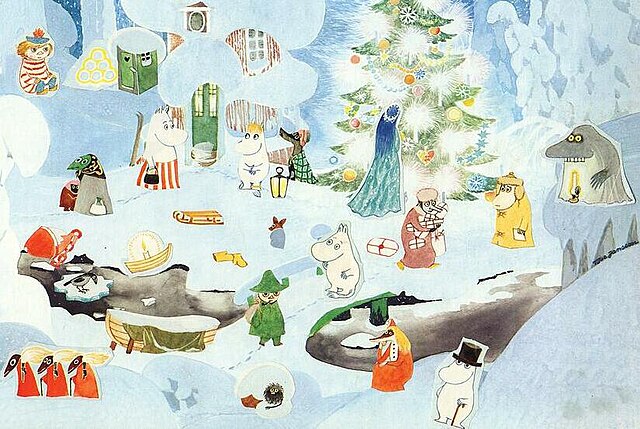Illustrating Middle-earth
Since the publication of J. R. R. Tolkien's The Hobbit in 1937, artists including Tolkien himself have sought to capture aspects of Middle-earth fantasy novels in paintings and drawings. He was followed in his lifetime by artists whose work he liked, such as Pauline Baynes, Mary Fairburn, Queen Margrethe II of Denmark, and Ted Nasmith, and by some whose work he rejected, such as Horus Engels for the German edition of The Hobbit.
Tolkien had strong views on illustration of fantasy, especially in the case of his own works. His recorded opinions range from his rejection of the use of images in his 1936 essay On Fairy-Stories, to agreeing the case for decorative images for certain purposes, and his actual creation of images to accompany the text in The Hobbit and The Lord of the Rings. Commentators including Ruth Lacon and Pieter Collier have described his views on illustration as contradictory, and his requirements as being as fastidious as his editing of his novels.

Gandalf fighting the Balrog on the bridge of Khazad-dûm. Scraperboard by Alexander Korotich, 1981
Tolkien thought that Milein Cosman's illustrations unhelpfully resembled the fashionable Edward Ardizzone's work (example pictured).
Tove Jansson is better known for her Moomin characters.
Frodo and Sam guided by Gollum through the Dead Marshes
J. R. R. Tolkien's artwork
J. R. R. Tolkien's artwork was a key element of his creativity from the time when he began to write fiction. A professional philologist, J. R. R. Tolkien prepared a wide variety of materials to support his fiction, including illustrations for his Middle-earth fantasy books, facsimile artefacts, more or less "picturesque" maps, calligraphy, and sketches and paintings from life. Some of his artworks combined several of these elements.
Ink drawing of "Quallington Carpenter", Eastbury, Berkshire, 1912
Watercolour painting The Hill: Hobbiton-across-the-Water used as the frontispiece of the first American edition of The Hobbit, 1938
The first page from The Book of Mazarbul, in the form of a facsimile artefact created by Tolkien to support the story and bring readers into his fantasy. The publishers declined to include a reproduction of the artefact in the first edition of The Lord of the Rings.
A Numenorean tile, such as might have been saved from the wreck of Númenor by Elendil, and taken in his ships to Middle-earth.








